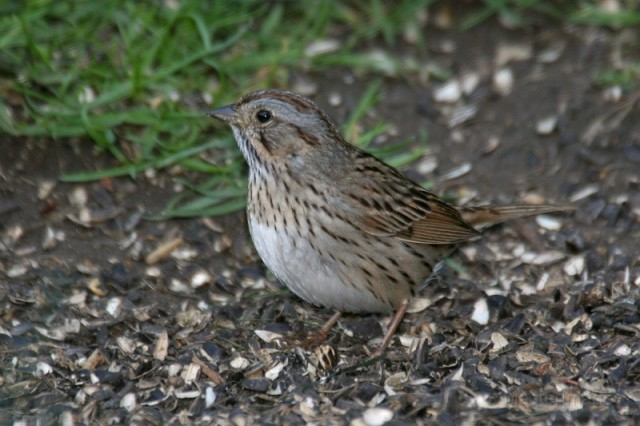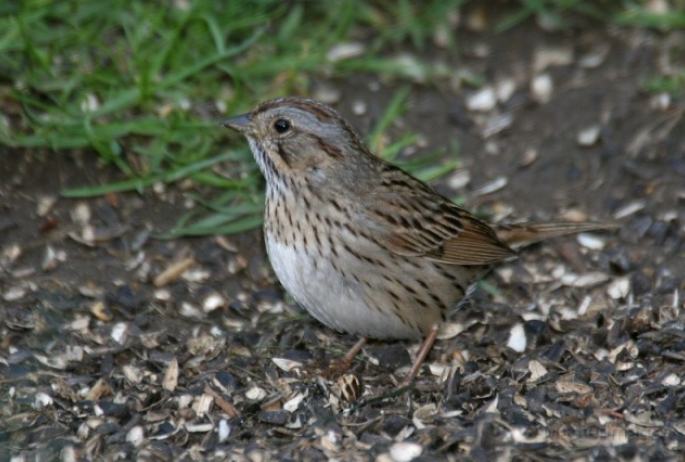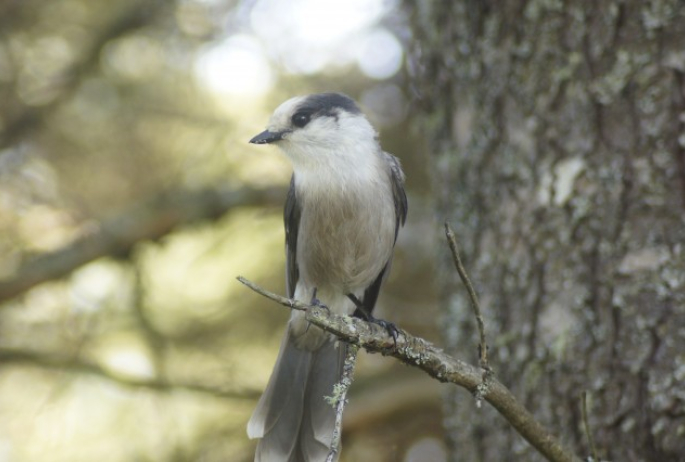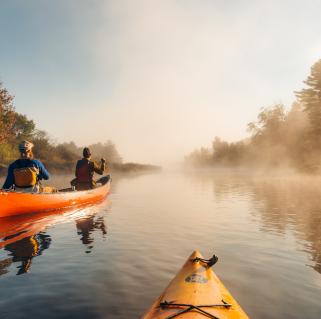Alan Belford
July 11, 2013
I led another birding trip for The Wild Center last week, this time to Bloomingdale Bog north of Saranac Lake. We began our trip along Rt. 55 out of Bloomingdale, walking south into the bog, and while rain threatened and harried us throughout the morning, we had a successful trip. We began amassing a nice list of species starting with a red-eyed vireo singing from a patch of deciduous woods near the parking area. As we walked into the bog we soon added many coniferous forest species such as Nashville and magnolia warblers, northern parula, and blue-headed vireo.
This time of year is also good for finding recently fledged young birds, and we came across family groups of both black-capped chickadees and golden-crowned kinglets. I pished to draw them in and their activity attracted red-breasted nuthatches and yellow-rumped warblers.

Further down the trail, a sharp chip told me that something – perhaps our presence – had disturbed a Lincoln’s sparrow, and so I set to work pishing for it and it eventually popped into view. The bird then hopped onto an open limb and sat there chipping – giving everyone in the group a great look. We often hear Lincoln’s sparrows singing across the bog mat, but seeing one this well is more difficult.
We continued on to a wide swath of alder and open habitat which accompanies a small stream about a mile below the parking area. There we found species such as common yellowthroat, alder flycatcher, and swamp sparrow. As we turned to head back to the cars, we spotted a young gray jay on the edge of the woods – or more truthfully, it had spotted us and had come looking for food. Bloomingdale Bog is one of the best places in the area to search for this boreal species, and everyone was excited to see it. A female purple finch was much less happy with the gray jay and dive-bombed and chased it relentlessly. The purple finch must have had a nest in the area and jays will eat eggs and nestlings.

The jay followed us as we walked – hoping for a handout – and we stood watching it for a while. It was soon joined by an adult bird – distinguished by its lightly colored head. I had seen two adults with two young in that same stretch of trail only a week earlier, but on this day one adult and one young bird were all we found.
The rain picked up and people started moving on to avoid getting soaked, stringing the group out along the trail. I was in the rear of the group when someone spotted a woodpecker just off the trail. It was a female black-backed woodpecker, another highly sought after boreal species. We called ahead, but folks were walking quickly to get out of the rain so no one heard us. So only those of us in the back of the group got to see the woodpecker which cooperated by staying for a while. It was an exciting conclusion to the day and we arrived back at the cars wet but happy.


Packages and Promotions
Valid Dec. 1
- Dec. 1
Valid Dec. 1
- Dec. 1
Linger Longer in Saranac Lake
Best Western Saranac Lake
Linger Longer in Saranac Lake at our supremely located property, Best Western Saranac Lake. Stay 2 nights or more and get 15% off!
Valid Jun. 20
- Sep. 7
Valid Mar. 12
- Jun. 30
Guided Nature Immersions - 10% off for Pre-Season Registration
Adirondack Riverwalking & Forest Bathing
Picture it now...you are wading the Ausable River on a warm summer day, feel the cool water against you, hear the sounds of the birds and the...
Valid May. 1
- Oct. 31
Valid Dec. 6
- Nov. 1
Zip and Whip Expedition
Farmhouse UTVs
Experience Outdoors and Farmhouse UTVs have teamed up to bring your family and friends the Adirondack adventure you've been waiting for....
Valid Jan. 21
- Jan. 21
Valid Jan. 21
- Jan. 21
Stay and Dine
Voco Saranac Lake
Receive a 50 dollar credit per stay to use in our Boathouse Saranac Lake Pub. Enjoy an exceptional dining experience with unparalleled views great...
Valid May. 1
- Nov. 2
Valid Apr. 1
- May. 1
Forest Bathing Guided Experience - 10% off for pre-season registration
Adirondack Riverwalking & Forest Bathing
Guided forest sensory immersion walk for all. Sign up early for 10% off!





















































































































































































































































































































